Setting up the Field/Land Preparation
Cinnamon thrives in direct sunlight, and its yield is significantly influenced by light exposure. Therefore, it is essential to clear any shade in the cultivation area to ensure that the plants receive optimal sunlight.
Recommended Spacing and Planting for Cinnamon Cultivation:
- In flat land, cinnamon should be planted with 4 feet between rows and 3 feet between plants (120 cm × 90 cm). This spacing allows for 9000 pits (3600/Ac) to be cut per hectare.
- If using seedlings, plant a pot containing 5-8 healthy plants in each hole. For vegetatively propagated plants, plant 3 plants per hole.
- On slopes exceeding 40%, plant along contour lines with a spacing of 4 ft x 2 ft (120 cm x 60 cm) to prevent soil erosion and ensure sufficient sunlight for the bushes. This results in 14,000 pits per hectare (5,600/ac), with 3-5 healthy seedlings per pit used for potting.
- Pits should be 1 × 1 × 1 ft (30 × 30 × 30 cm) in dimension for planting.
- Planting should coincide with the onset of the Yala and Maha seasons, coinciding with the beginning of rains. During this period, use one standard seedling pot per pit.
- Apply 25g of Eppawala Rock Phosphate (ERP) as a basal dressing during planting to promote strong root development.
- When planting in soil previously used for rubber cultivation or related to rubber cultivation, apply 10g of sulfur to the planting pits one week before planting to reduce the risk of white root disease.
- After planting, provide support for the growing bush by tying it to keep the stem steady as branches spread and the plant matures into a bush.
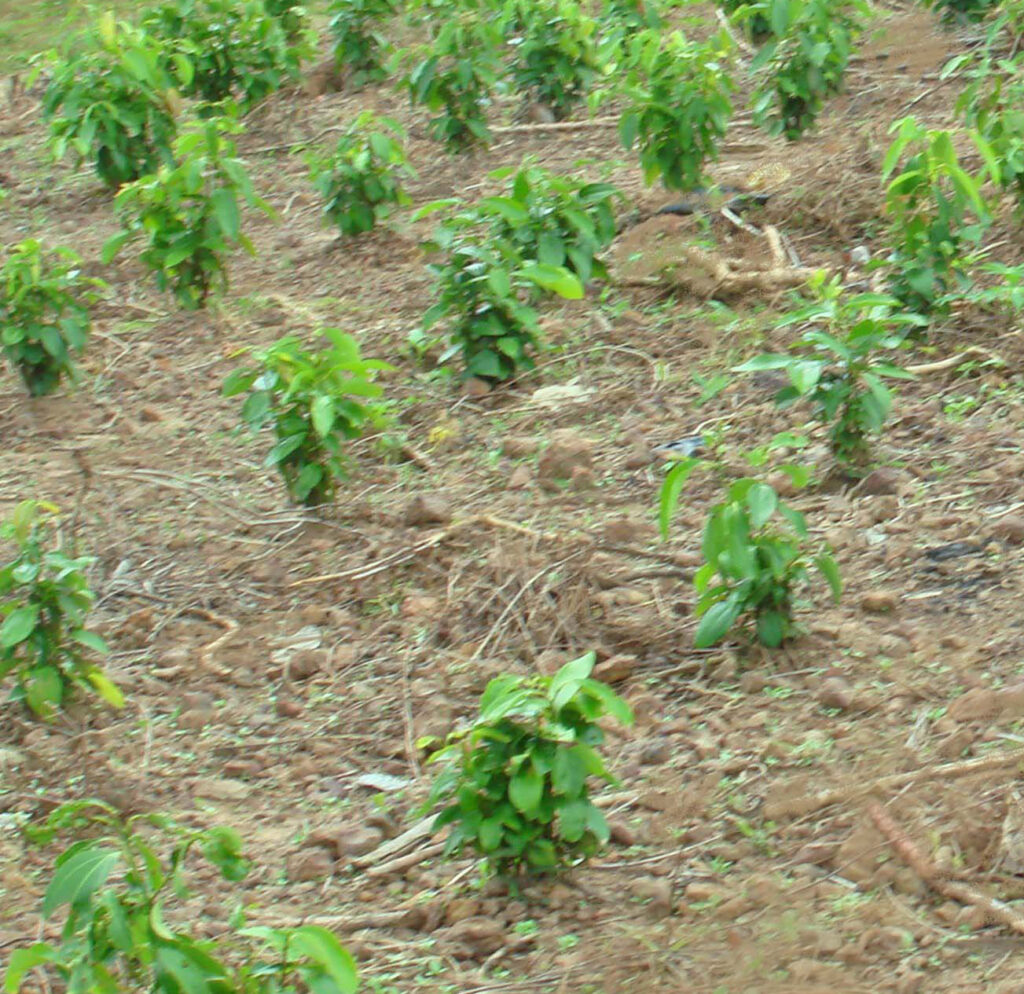
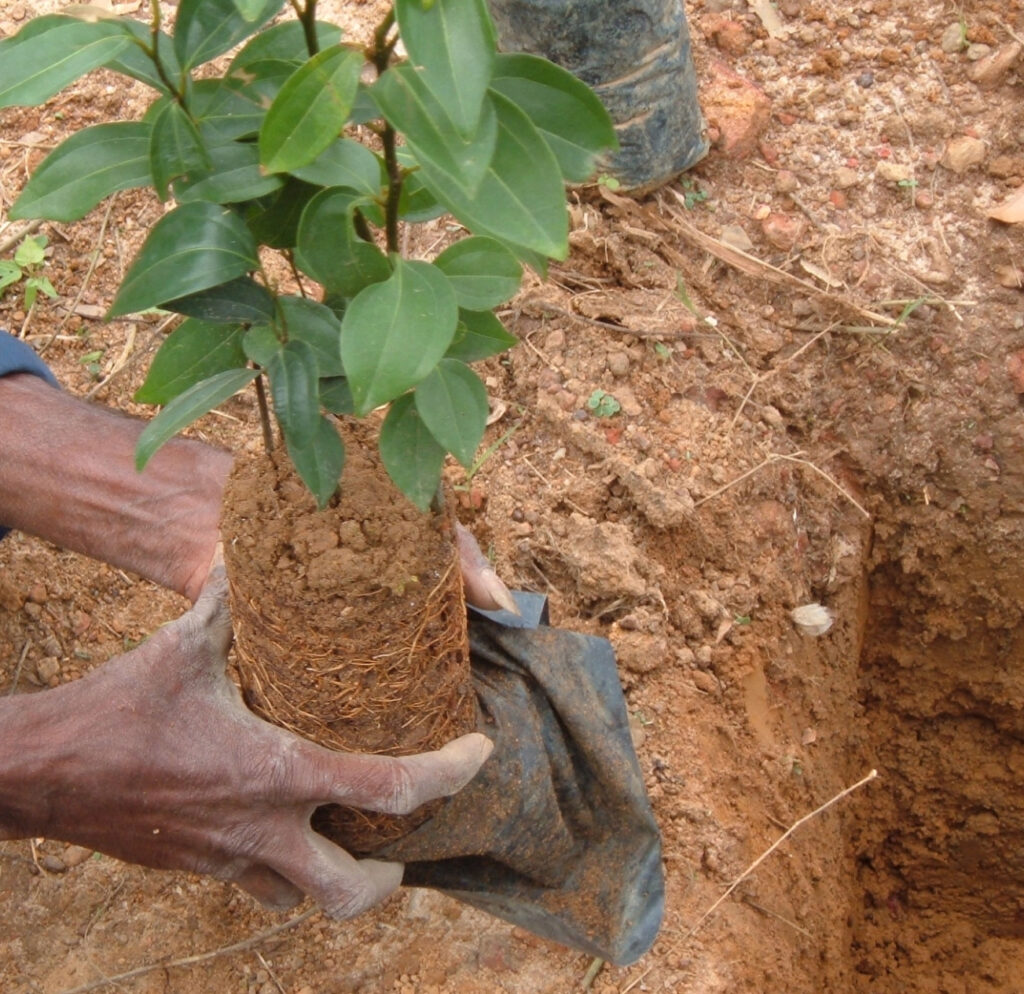
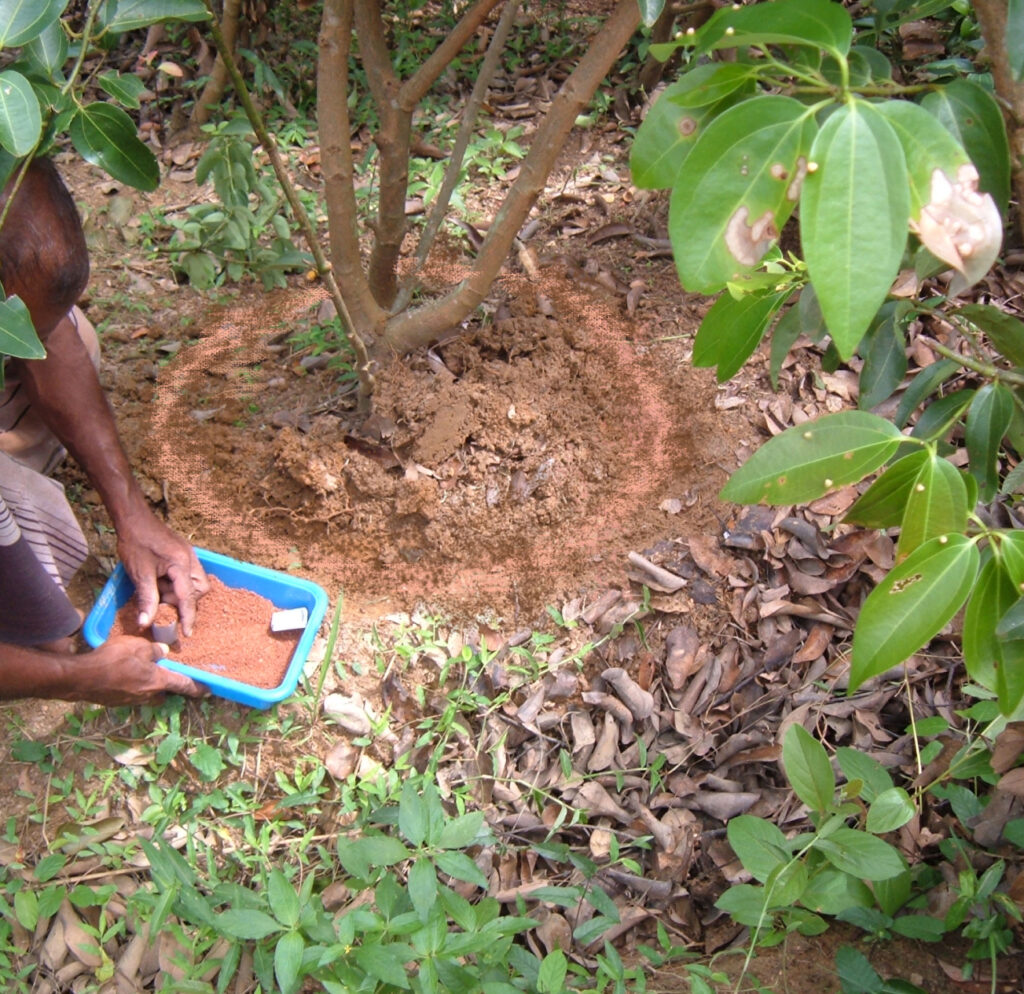
Thinning Out:
- Three months after planting in the field, remove dead and infected plants, keeping only the healthy and vigorous ones at the recommended rate.
- Recommended number of plants per hole:
- For spacing of 4 × 3 feet: Plant 5 healthy plants per hole.
- For spacing of 4 × 2 feet: Plant 3 healthy plants per hole.
- For vegetatively propagated plants with spacing of 4 x 3 feet: Plant 3 healthy plants per hole.
Irrigation:
- If cultivation is conducted under dry conditions, various irrigation methods can be utilized including basin irrigation, flood irrigation, overhead sprinklers, or drip irrigation.
Weed Management:
- Weeds in cinnamon cultivation have both beneficial and harmful effects. Therefore, the goal should be weed management, not eradication.
- Weed management involves maintaining weeds at a level that does not harm the crop, rather than completely removing them.
- Weeds help prevent soil erosion, protect biodiversity by sheltering beneficial organisms, and contribute organic matter to the soil.
- In mature plantations, weeds can protect young cinnamon shoots from being eaten by animals after harvesting.
- However, unchecked weeds can significantly reduce yield by competing with cinnamon for water, soil nutrients, sunlight, and space.
- The recommended method for weed control in cinnamon fields is periodically cutting the above-ground parts of weeds using a grass cutter or appropriate tool.
- More intensive weed control is necessary during the early stages of cinnamon growth. As cinnamon plants mature, their branches naturally reduce sunlight reaching the soil, thereby controlling weed growth.
- Maintaining continuous cover in the plantation aids in effective weed control.
- In flat areas, weed control in young plantations can be achieved using a brush cutter or grass cutter, with hand removal of weeds immediately surrounding the plants.
- In young plantations, weeding should occur four times a year or every three months, while in mature plantations, it should be done twice a year before fertilizer application.
- Mulching with cut weeds provides additional organic fertilizer, retains soil moisture, and supports weed suppression.
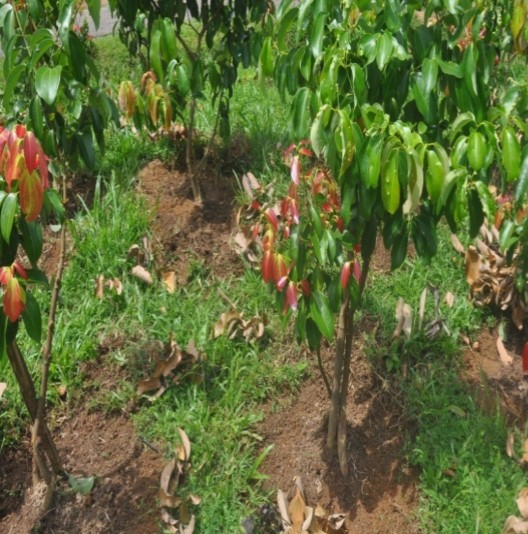
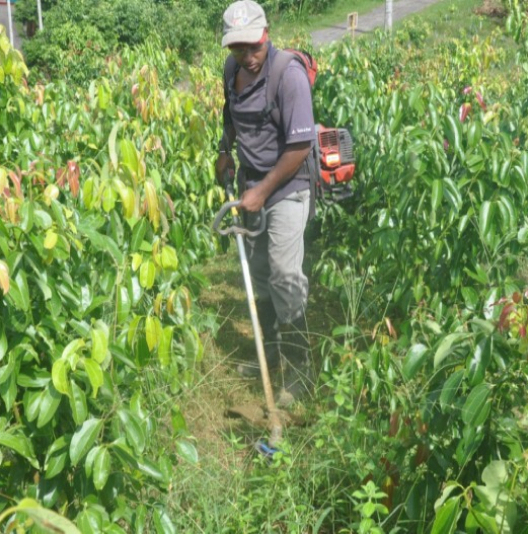
Weed Control in Mature Cinnamon Plantations:
- Around cinnamon plantations, manually remove weeds within a one-foot radius and use a grass cutter or brush cutter for the remaining area, applying the cut weeds as mulch.
- Weeding with a mamoty is also feasible, but it’s not advisable for long-term use, particularly on slopes, as it can cause soil erosion by exposing the surface soil.
- Avoid prolonged use of chemical herbicides as they can lead to the accumulation of toxic metal residues in the stems, which may adversely affect the growth of new shoots in the cinnamon plantation.
Pruning the Plants:
This process involves removing unwanted cross branches, leaves, disease, and pest-damaged branches, as well as weak branches. It is recommended to cut them upwards using a well-sharpened and clean knife (‘Keththa‘) without damaging the stem. This method helps create straight stems and allows for bark harvesting with minimal damage. Moreover, it reduces competition for nutrients for the main stem growth and allows sunlight to reach the base of the bush, minimizing disease and pest damage. To effectively manage the crop, pruning and thinning should be carried out cyclically at regular intervals.
- The first pruning should be done when the plants are about one and a half years old. Remove cross branches and leaves up to half the height of each stem.
- The second pruning can be done when the plants are about two years old, again removing cross branches and leaves up to half the height of each stem.
- For mature plantations in the harvesting stage:
- Remove cross branches and leaves up to one meter above ground level.
- Additionally, pruning should be carried out three months before harvest, at the time of harvest, and three months after harvest.
- Three months after harvest, remove excess new shoots and weak shoots (‘kola pela’) that cannot grow into a harvestable stem, leaving three good shoots from one cut.
- Also, remove weak, diseased, or pest-damaged branches at the time of harvesting.
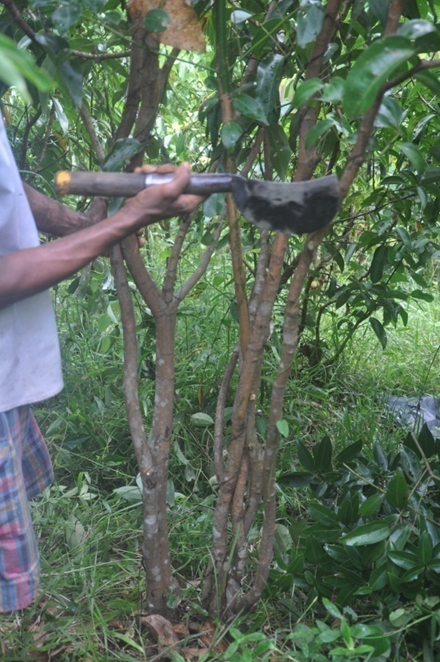
Training the Plants:
When training plants, it’s important to tie the stems straight after each harvest to prevent bending and encourage straight growth. This also helps avoid stimulating lateral bud growth.
- If cinnamon bushes grow tall and their stems cannot be kept in a straight position by tying alone, it is necessary to plant a support and tie the stems to it.
- When tying the bushes, use bands made of easily degradable material, such as cloth bands, to avoid damaging the bark. Ensure the bands are loosely tied so that the stems are not pressed too tightly.
- Remove the tied bands after 2 months to prevent interference with equipment such as lawn mowers (grass cutters). It’s crucial to completely remove the bands from the field to avoid environmental damage and equipment inconvenience.
Vacant Filling
Planting new cinnamon plants to replace unestablished cinnamon plants in a newly planted cinnamon plantation or to replace dead bushes in an older cinnamon plantation is called vacant filling. This practice helps in setting the appropriate plant population, thereby increasing yield and minimizing weed growth.
Vacant Filling in a Newly Planted Cinnamon Plantation:
During the first two years of a newly established cinnamon plantation, attention should be given to filling any gaps with replanted trees. Vacant filling should be initiated three months after the initial planting.
- The crop should be inspected at least once every three months during the first two years. If gaps are identified, new plants should be added.
- Use 8 × 5-inch, 250-gauge polythene pots with recommended characteristics for replanting. Plants should be over 6 months old.
- Apply 25g of Eppawala Rock Phosphate to each 1 × 1 × 1 ft planting pit.
- If there are fewer than five seedlings or fewer than three vegetatively propagated plants in one area, additional plants should be added to those spots.
Vacant Filling in a Mature Cinnamon Plantation:
Vacant filling of a mature crop should be done with the onset of the monsoon after harvesting.
- Choose cinnamon plants that are 1½ – 2 feet tall, 18 months old, and planted in 12 × 10 inch or larger pots made of 300-gauge polythene with recommended characteristics.
- When planting, add 25g of Eppawala Rock Phosphate to a pit of dimensions 1½ × 1½ × 1½ feet, then plant the cinnamon plants.
- Trim unwanted branches of overgrown cinnamon trees near new plants to ensure better sunlight for the newly planted ones.
